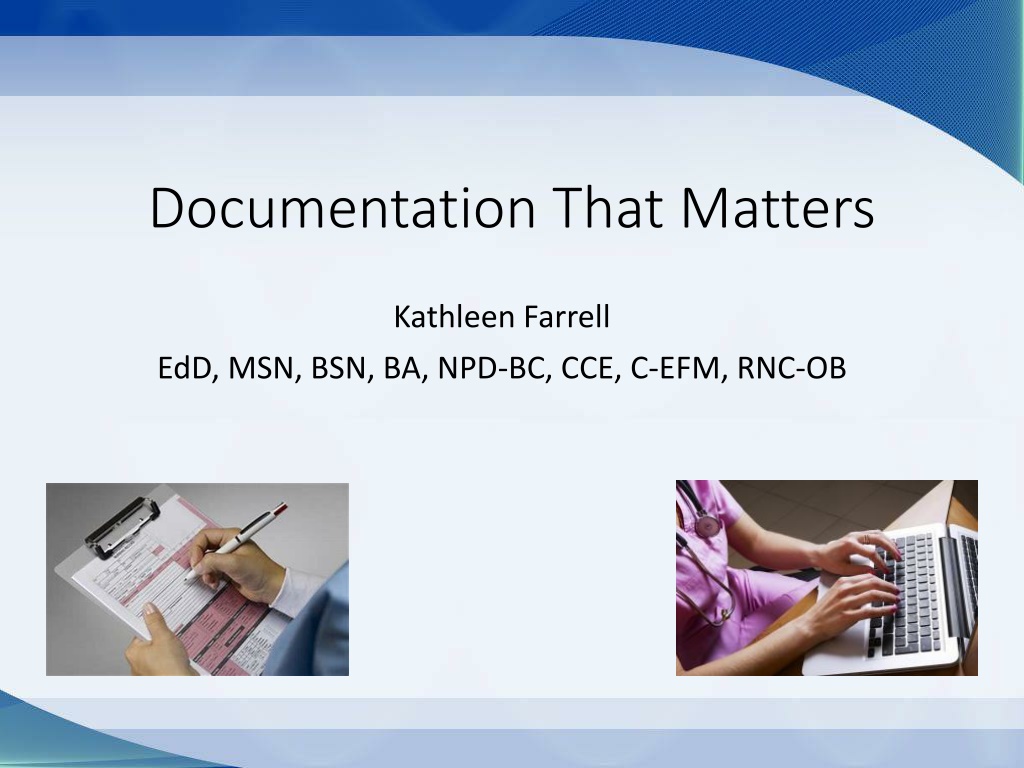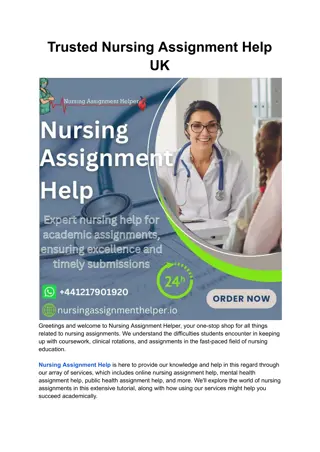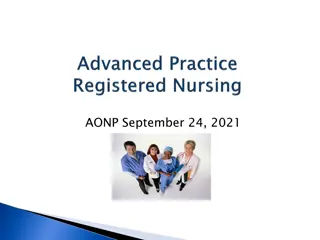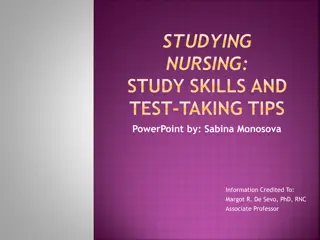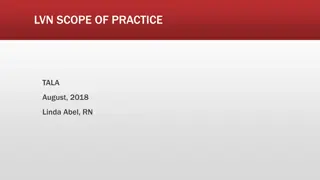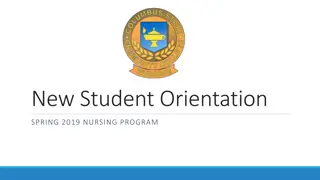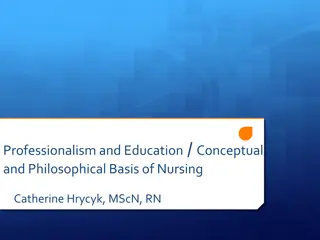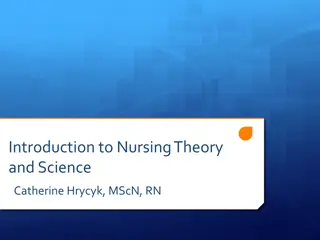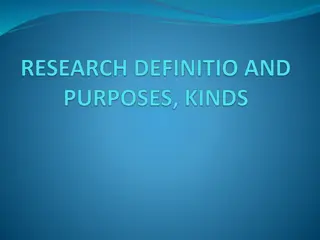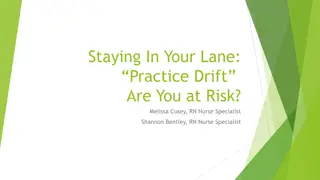Understanding the Importance of Documentation in Nursing Practice
Documentation plays a crucial role in nursing practice, providing a comprehensive record of patient care, treatment, and outcomes. This article delves into the definition and significance of nursing documentation, key elements to include, and explores methods for producing quality documentation. Additionally, it discusses The Joint Commission Standards for maintaining accurate medical records, the purposes of documentation, and highlights the critical role it plays in facilitating communication, care coordination, reimbursement, and professional accountability.
Download Presentation

Please find below an Image/Link to download the presentation.
The content on the website is provided AS IS for your information and personal use only. It may not be sold, licensed, or shared on other websites without obtaining consent from the author. Download presentation by click this link. If you encounter any issues during the download, it is possible that the publisher has removed the file from their server.
E N D
Presentation Transcript
Documentation That Matters Kathleen Farrell EdD, MSN, BSN, BA, NPD-BC, CCE, C-EFM, RNC-OB
Documentation That Matters Objectives Define nursing documentation Discuss the importance of documentation Summarize key documentation elements Review a documentation method that can produce quality results
Documentation That Matters Definition Any written or electronically produced information about a patient that describes the care discussed, planned, recommended, and/or provided to the patient and the subsequent outcomes.
The Joint Commission Standards The hospital maintains complete and accurate medical records for each individual patient. Entries in the medical record are authenticated. Documentation in the medical record are entered in a timely manner. The hospital audits its medical records. The hospital maintains its medical records.
The Joint Commission Standards The medical record contains information that reflects the patient s care, treatment, and services. The patient s medical record contains documentation on any operative or other high-risk procedures and the use of moderate or deep sedation or analgesia. Qualified staff receive and record verbal orders. The patient s medical record contains discharge information.
Documentation That Matters Purpose: To record all patient care activities To facilitate communication/coordination of care For reimbursement Record of professional accountability Proof of individualized care and the patient s response For continuity of care
Documentation That Matters Purpose: To facilitate change in the management plan Accessible details in the event of litigation To comply with requirements from professional, regulatory and legal agencies To provide data for Research and Quality Management Evidence that the standards of care have been met
Documentation Alert If it is not written, it was not done If it is not written, it was not done
Documentation Tools Documentation Tools Electronic Flowsheets Progress Record Checklists Care Plans Care Maps Monitor Strips Kardex
Documentation That Matters Factors that improve the quality of documentation: Accuracy what you see, hear, smell, feel, measure, and count Relevance record only data that is relevant to the care of the patient Completeness include all required data and documentation forms Timeliness complete records within the time specified by the policies of the institution Confidentiality unauthorized access to Protected Health Information is prohibited by law
Documentation That Matters When to Document On admission For patient care activities as indicated- before/during/after If the patient refuses care When there is a change in status and/or care activities If there is an occurrence/issue At transfer or discharge After patient/family education
Documentation That Matters What to Document Observations/Assessments/Reassessments All care provided by nurses and the interdisciplinary team The treatment plan Change in patient status Response to treatment Issues/incidents involving the patient and/or family members Patient/family education and an evaluation of the process
Documentation That Matters Considerations The medical record (chart) is a legal document No arguing or fighting in the medical record The medical record must always be stored safely Written consent is required to release medical documents Correct errors according to the institution s guidelines
Documentation That Matters Do: Check that you have the correct medical record before making entries Write professionally terminology, content, syntax Enter data in the correct place (electronic records) Date, time, sign every entry Record conversations with care providers name, content, response Chart barriers/refusal of treatment and efforts to resolve the situation
Documentation That Matters Do: Avoid abbreviations. If required use only institution approved abbreviations Follow the institution s guidelines for late entries and corrections Write legibly When an entry continues to another page - sign the end of the first page and enter continued, date, time, and signature on the new page Electronic entries -log off after entering data
Documentation That Matters Do Not: Document care before it is given fraud Alter the medical record this is criminal Block chart enter care activities when provided Enter care done by another nurse Write imprecise descriptions, use a measurement
Documentation That Matters Do Not: Chart a symptom or complaint without stating what was done about it Leave large spaces and blank lines between text Copy medical records for yourself or family members this violates privacy rules
Incident/Occurrence Reports A document that records an occurrence involving patients, visitors, and/or employees Must be completed as soon as possible after the incident occurred Be clear, concise, and factual What happened When To whom What was done about the situation Notify nursing leadership & risk management immediately if completed NEVER state in the medical record that an incident/occurrence report was completed
Documentation Methods SOAPIE - Problem oriented charting S Subjective What the patient says O Objective Factual data observed/measured A Assessment Conclusions based on objective & subjective data P Plan Management plan of care I Intervention Care given E Evaluation Outcome/responses to nursing & medical interventions
Case History A 30 year old Black male was admitted because he was hit by a car while crossing the street. On admission the patient has a thigh high cast to his left leg, ecchymotic and bruised areas on face, hands, and chest. T 99, P 78, R 20, BP 140/90, O2 Sat. 99. He is complaining of strong pain, also states that he feels sick and has a headache.
Documentation Method S Subjective Patient states I feel sick, I have strong pain and a headache. O Objective T 99, P 78, R 24, BP 140/90, O2 Sat 99. A Assessment Numeric pain score 10/10. Cast dry and intact. Toes warm to touch, small amount of swelling noted. Ecchymotic and bruised areas on face, hands, and chest dry. Swelling on left side of the face. Increased respiratory rate. Elevated BP. P Plan Elevate the left leg on a pillow. Medicate for pain. Neuro checks q 30 mins. Observe for signs of respiratory distress. Patient education: signs and symptoms to report respiratory distress, CNS changes, pain, cast discomfort. Monitor BP. I Intervention Elevate leg. Medicate for pain. Neuro checks. Request MD to come and evaluate the patient. E Evaluation Numeric pain score 3/10. Neuro checks within normal limits. R 20.
References American Nurses Association. Nursing: Scope and Standards of Practice, 4thEdition. Silver Spring, MD: American Nurses Association 2021. ANA s Principles for Nursing Documentation: Guidance for Registered Nurses. American Nurses Association, Silver Spring Maryland, 2010. Standards for Joint Commission Accreditation and Certification. https://.www.jointcommission.org/standards
